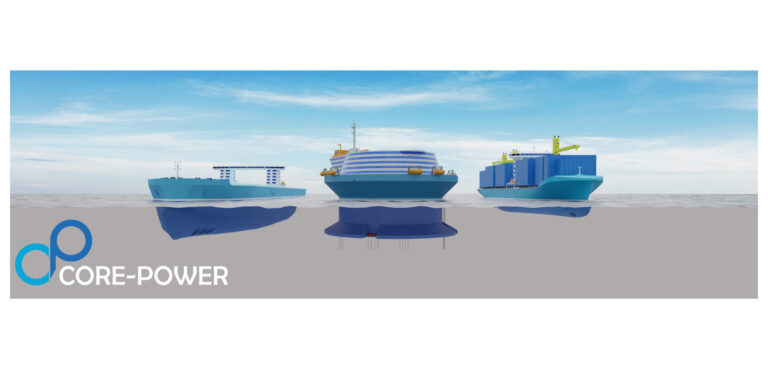A floating nuclear power plant design combined with an ammonia refinery has been unveiled by Core Power as a way to show how green fuel for shipping can be produced reliably at low cost.
The company says that the solution could be placed at either end of green shipping corridors. These were proposed at the Clydebank Declaration and signed at COP26 in 2021. During a company launch event, Core Power showed how a single floating nuclear power plant with an ammonia refinery could produce1.3 million metric tons of 100% green ammonia, at a price which would be competitive when compared to the cost of low sulphur bunker fuel and carbon taxes.
“Making green ammonia from 100% clean hydrogen and nitrogen is very energy intensive and requires reliable low-cost electricity, and production of fuels must happen where we need it and when we need it,” commented Dr Rory Megginson, director of analytics, Core Power. “Placing a floating refinery at either end of a green corridor, in the US Gulf and UK continent would provide a reliable, low-cost fuel supply to all ships trading on that route and have plenty of green hydrogen-based fuel left over [to also] supply to the inland and coastal markets.”
The solution from Core Power consists of a cylindrical hull which measures 90m in diameter, which is fitted with four molten salt reactors capable of producing 1,200MW of electricity 24 hours a day.
“The key advantage of the molten salt reactor for this purpose is that we can top up the fuel at full power, so we don’t have to stop to refuel, and that means we can run for a very long time at max capacity,” added Giulio Gennaro, technical director, Core Power. “The MSR is an ambient pressure reactor which cannot pollute the environment in the event of a mishap or an accident, and that’s popular. The lack of pressure also means the emergency planning zone around the installation should be confined to the boundary of the ‘site’ or the hull itself.”
At the event, Core Power also demonstrated ways in which offshore wind can be utilized to feed power to the system when conditions are optimal.
“Combining the output of intermittent offshore wind with reliable floating nuclear means the billions spent on renewables can live up to its promise and shake its heavy dependence on fossil fuels on still or stormy days,” concluded Megginson.



